Mark Sisson's Blog, page 158
January 3, 2018
What Are You Doing to Live Awesome Today?
 I’ve got a regular post coming soon, but I’m also kicking off something different this morning. Isn’t that what new beginnings are for?
I’ve got a regular post coming soon, but I’m also kicking off something different this morning. Isn’t that what new beginnings are for?
For 2018, I’ll be adding something new to the daily line-up on Mark’s Daily Apple—a daily takeaway post before the main article each weekday. For those who want a quick tip, simple target, or motivation boost to start your day, this is it.
Sometimes a salient quote, sometimes a fitness strategy, nutrition bite, or personal challenge, each day you’ll find something different—all to help you “Live Awesome” today.
Today’s takeaway is a challenge….
“If you want to lift yourself up, lift someone else up.” — Booker T. Washington
New Year resolutions are often self-focused. It’s natural, of course. The only person we can or should change is the one in the mirror. But we’re an innately social species that thrives on collaboration as well as altruism—and we find a practical, immediate kickback to those instincts. There’s something remarkably impactful about supporting someone else in his/her goal. What you offer fuels your own endeavor. So, choose one way you’ll encourage or help someone else this year. Support folks in the Mark’s Daily Apple Facebook Group or the Keto Reset Group. Coach someone. Be a gym partner. Send a message to someone you know needs it this morning. Put awesome energy out there, and see it expand in your own life.
There’s more to come this morning (including a giveaway), so stay tuned. In the meantime, I’d love to hear what you’d like to see in the daily takeaway posts. Grok on, everybody.
The post What Are You Doing to Live Awesome Today? appeared first on Mark's Daily Apple.



January 2, 2018
A Practical Tool For Your 2018 Goal Setting
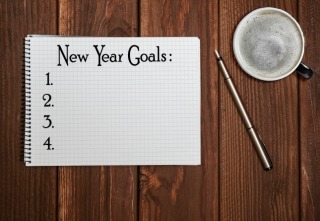 Today’s guest post is offered up by one of our own, Erin Power. She’s our awesome Student and Graduate Support Lead for the Primal Health Coach Program as well as an amazingly successful health coach in her own right. I love her message of starting out the year with a solid, actionable goal in hand—and a practical takeaway for defining that New Year objective. Enjoy, everyone!
Today’s guest post is offered up by one of our own, Erin Power. She’s our awesome Student and Graduate Support Lead for the Primal Health Coach Program as well as an amazingly successful health coach in her own right. I love her message of starting out the year with a solid, actionable goal in hand—and a practical takeaway for defining that New Year objective. Enjoy, everyone!
There’s a tide shift happening—and it’s exciting and inspiring to be a part of it.
Within my health coaching practice, I’m finding the entire vernacular changing. When I ask my prospective clients what their Main Health Goals are, I’m not hearing things like “I want to look good in my swimsuit on my beach vacation.” Or, “I want to rock a body-conscious outfit at my high school reunion.” Or even “I want to lose X number of pounds by X day of the year.”
Check out these quotes from some of my client Intake Forms over the last six months:
“I have an unhealthy relationship with food; I have a sugar addiction and constant food obsession. I need to get rid of all of this.”
“I’m looking for the lifestyle change, and to gain a better understanding of how food works in relationship to my body.”
“I’m uncertain of the foods I should be eating and the workouts I am doing. I need help reorganizing my eating, drinking, sleeping and workout habits.”
“My body feels out of sorts. I want to increase my energy and my overall sense of wellbeing.”
“I have been obsessed about food for my entire life. I just want to understand it all, once and for all.”
When people are put on the spot—and about to make a financial investment in improving their health—they spend some time really thinking about how to specifically articulate their health goals.
They put a lot more time into it than most of us put into our New Year’s Resolutions, which often end up looking a lot like the same hastily-scribbled list from last year.
And that’s a big reason why New Year’s Resolutions don’t work.
A benign list, with no emotion behind it—no strategy, no incentive, no WHY—will almost always fall short in the motivation category. There’s no skin in the game. I’m not talking about a financial investment. I’m talking about an emotional one. A spiritual one.
Why Applying WHYx5 Makes a Difference
The Why-by-Five exercise is a tool that I use with my health coaching clients to help them uncover their true motivating factors for change. Those same old resolutions make it onto the list each year for a reason, and I think we can agree it would be nice to move the needle on a few of them—once and for all. This exercise helps us get to the root. All you have to do is ask yourself WHY, five times.
Allow me to share an example:
My Main Health Goal for 2018 is, as always, improved mobility. Except, that’s too vague. And the way I know it’s too vague is because I literally make this New Year’s Resolution every year and have never once stuck to it.
Let’s go deeper:
I want to practice my barefoot Grok Squat daily, keeping my feet in a relatively neutral position and my chest lifted. I’d like to work up to holding this for ten straight minutes.
Better! Now we work that specific, measurable, realistic goal through the WHYx5 exercise:
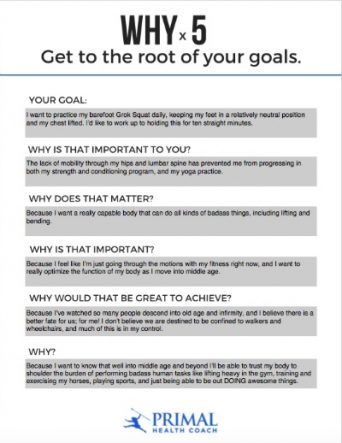 Why is that important to me?
Why is that important to me?
The lack of mobility through my hips and lumbar spine has prevented me from progressing in both my strength and conditioning program, and my yoga practice.
Why does that matter?
Because I want a really capable body that can do all kinds of badass things, including lifting and bending.
Why is that important?
Because I feel like I’m just going through the motions with my fitness right now, and I want to really optimize the function of my body as I move into middle age.
Why would that be great to achieve?
Because I’ve watched so many people descend into old age and infirmity, and I believe there is a better fate for us—for me! I don’t believe we are destined to be confined to walkers and wheelchairs, and much of this is in my control.
Why?
Because I want to know that well into middle age and beyond I’ll be able to trust my body to shoulder the burden of performing badass human tasks like lifting heavy in the gym, training and exercising my horses, playing sports, and just being able to be out DOING awesome things.
From there, simply splice all of those well-thought out intentions together, to achieve an articulate goal worth reaching for.
Here is inspiration I can stick on the front of the fridge:
My 2018 goal is to practice my barefoot Grok Squat daily so that I can keep my feet in a relatively neutral position and my chest lifted, and I’d like to work up to being able to hold this for ten minutes. This will lessen the physical restrictions through my hips and lumbar spine, and enable me to trust my body to shoulder the burden of performing badass human tasks well into middle-age and beyond.
Okay now you go.
Download the WHYx5 exercise here (PDF printable), fill it out yourself, and share your 2018 goal(s) on the comment board. What are you reaching for, and what’s your why behind that desire?
Thanks for reading, everyone, and Happy New Year!
— Erin Power, CHNC, PHC
The post A Practical Tool For Your 2018 Goal Setting appeared first on Mark's Daily Apple.



January 1, 2018
Dear Mark: Happy New Year, and Flight Crews, Radiation, and Cancer
 Before I get to the questions, Happy New Year, everyone! We have some exciting announcements and daily posts coming throughout January designed to help you successfully tackle this coming year (and any future ones you experience) along with some great giveaways, so stay tuned this week.
Before I get to the questions, Happy New Year, everyone! We have some exciting announcements and daily posts coming throughout January designed to help you successfully tackle this coming year (and any future ones you experience) along with some great giveaways, so stay tuned this week.
For today’s Dear Mark, I’m answering just one question. It concerns an article I posted in yesterday’s Weekend Link Love about the radiation exposure flight crews experience. They receive more radiation than people who work next to nuclear reactors, which sounds really dangerous. Won’t all that radiation result in higher cancer rates?
Let’s take a look:
Hi Mark,
Regarding the article about flight crews being exposed to more radiation than any other profession, does this translate into higher cancer rates?
The atmosphere is teeming with cosmic rays from outer space. Few reach us here on the Earth’s surface, but up in the air it’s a different story. Your average member of an air crew will receive about three times as much radiation each year as your average landlubber does.
Here’s the article.
So they’re getting considerably more radiation than everyone else. Are flight crew members even at a higher risk for cancer? Maybe, depending on the sex, the study, and the cancer. In one study of female flight attendants, breast cancer and melanoma were the biggest risks. In another, male crew members had slightly increased risks for melanoma and all-cause mortality while female members had slightly increased risks for breast cancer and reduced all-cause mortality and mortality from all cancers. Another study found that female flight attendants reported 34% more reproductive cancers than the general population.
Okay, there are some increase and some decreases. But let’s focus on the increases. Is the radiation the cause?
They do get more radiation than anyone else, and high dose radiation can and does cause cancer.
But that’s not all they get. They also subject their bodies to consistently inconsistent circadian inputs. They whizz all over the world, crossing time zones. They’re often active at night, if their bodies can even identify “night.”
The two cancers that keep popping up—breast and melanoma—have established relationships to circadian arrhythmia. The ability of our skin to resist the damaging effects of UV rays is severely degraded when sleep or circadian rhythms are disturbed. And there are dozens of studies linking breast cancer to shift work, sleep disturbances, nighttime light exposure, and other things that either cause or reflect circadian misalignment.
My guess is that the circadian arrhythmia of plane work is more of a primary cause.
There’s also the lack of sun exposure.
As I’ve shown in a previous post, too little sunlight may be as bad for melanoma risk as too much sunlight. Sun gives us vitamin D, which has the ability to turn pre-cancerous skin cells into benign skin cells, repair UV damage, and prevent the formation of skin cancer. If you’re sitting inside an airport or an airplane for most of your work day, you aren’t producing any vitamin D from sun exposure.
But I don’t think the radiation is having much of an effect. In one study that found an increased risk of skin cancer in pilots, they were unable to link the increased risk to increased exposure to cosmic radiation. Although the authors maintain the “influence of cosmic radiation on skin cancer cannot be entirely excluded,” I find it far more likely that circadian misalignment and perhaps sun deficiency are the culprits.
What’s really ironic is that the low level doses of radiation flight crews receive may be protective. This is the hormesis hypothesis, which posits that low doses of otherwise harmful stimuli provoke an adaptive response that results in net benefits to health. Most people can think of hormetic stressors like polyphenols (antioxidants are actually pro-oxidants that compel our endogenous antioxidant systems to work better), fasting (going without food trains us to burn body fat), exercise (damages your muscles, which come back stronger than before), but radiation is another one.
That’s probably surprising to you. Radiation is supposed to be dangerous at any dose, just less dangerous at lower doses. Turns out that the old paradigms of radiation toxicity are probably wrong as an absolute anyway.
Linear paradigm: The toxicity of radiation proceeds linearly in a dose-response fashion.
Threshold paradigm: There’s a certain amount of radiation that we can safely tolerate, after which the toxicity increases linearly.
Hormesis paradigm: Some radiation is healthier than none. Too much is really bad.
Imagine if the hormesis hypothesis is true. That would mean it’s conceivable that protecting the flight crews from radiation exposure would increase their risk of cancer. I’m not saying it’s true. We need more data. I’m just saying I wouldn’t be surprised if it were.
All this is a roundabout way of saying not to worry about flying. And if you are a flight attendant or pilot, perhaps you should worry, just not for the reasons you were thinking.
Oh, and get your sleep, sun, and daytime natural light. Wear blue blocking shades after dark and cut down on the electronics usage.
Take care. Have a great year. I can’t wait to tackle it with you all.
The post Dear Mark: Happy New Year, and Flight Crews, Radiation, and Cancer appeared first on Mark's Daily Apple.



December 31, 2017
Weekend Link Love — Edition 484
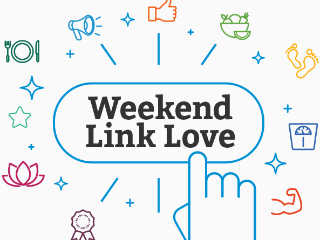 Research of the Week
Research of the WeekIncreasing cholesterol synthesis gene expression restores the walking ability of mice with multiple sclerosis. Too bad they’ll all keel over from heart attacks, no doubt.
In terms of cancer risk, nicotine inhalers are way safer than e-cigarettes, e-cigarettes are way safer than tobacco vaporizers, and tobacco vaporizers are way safer than cigarettes.
New Primal Blueprint Podcasts

Episode 205: Jason Leapai and Jason Sakorsi: Host Elle Russ hangs out with Jason and Jason, hosts of The Savage Podcast. The Jasons are big nature-lovers, true outdoorsmen, lifelong martial artists, and committed Primal eaters.
Each week, select Mark’s Daily Apple blog posts are prepared as Primal Blueprint Podcasts. Need to catch up on reading, but don’t have the time? Prefer to listen to articles while on the go? Check out the new blog post podcasts below, and subscribe to the Primal Blueprint Podcast here so you never miss an episode.
Interesting Blog Posts
What could have been an interesting discussion—should you cook with olive oil or coconut oil?—ends up a one-sided screed against saturated fat.
For the second straight year, U.S. life expectancy has dropped.
Media, Schmedia
I admire Rahul Verma’s efforts to fight the Westernization of the Indian diet, but he should really read Dr. Ron Sinha’s South Asian Health Solution.
A 63-year-old British man found himself enmeshed in a months-long battle with uncontrollable prostate orgasms after buying a special butt plug to nurse his infected prostate back to health and taking Cialis to heal a UTI. I’m sure those were the reasons.
Everything Else
An artificial pancreas that metes out insulin as-needed, even during HIIT.
Knowing back pain’s mostly in the head is often the only way chronic back pain sufferers can improve.
When to start collecting social security benefits.
Things I’m Up to and Interested In
Pretty incredible study result: In treatment-resistant depression, psilocybin increases the amygdala response to emotional faces, the opposite of what SSRIs do. SSRIs blunt negative emotions; psilocybin (with psychological support) help patients face and work through them.
Blog post that got me thinking: Excessive heavy lifting is unnatural!
Concept I’m pondering: Do schizophrenics have a better grasp on objective reality?
Podcast I enjoyed: Nina Teicholz on Joe Rogan.
Miscellaneous news I found interesting: Flight crews are exposed to more radiation than anyone else.
Recipe Corner
A stir-fry sauce for all instances.
Make-your-own charcuterie board.
Time Capsule
One year ago (Dec 31– Jan 6)
What Will 2017 Mean For Your Life? – Well?
New Year Pitfalls: Where Kick-Start Plans Go Wrong – Don’t make these mistakes.
Comment of the Week
“Sounds like you have some skin in the game.”
– Nicely done, Nocona.
Want to make fat loss easier?
Try the Definitive Guide for Troubleshooting Weight Loss for free here.
The post Weekend Link Love — Edition 484 appeared first on Mark's Daily Apple.



December 30, 2017
Keto Blueberry Muffins
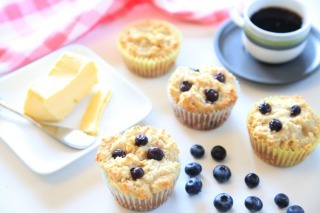 These keto-friendly muffins are hands-down one the best gluten-free, low-carb muffins out there. Even with only a trace of sugar per serving (sweetened with stevia), these muffins really taste like a treat worth getting out of bed for. They’re fluffy and moist with a smooth cake-like texture, proving once and for all that you don’t need white flour, sugar, or a long list of not-so-natural ingredients to make a genuinely delicious muffin.
These keto-friendly muffins are hands-down one the best gluten-free, low-carb muffins out there. Even with only a trace of sugar per serving (sweetened with stevia), these muffins really taste like a treat worth getting out of bed for. They’re fluffy and moist with a smooth cake-like texture, proving once and for all that you don’t need white flour, sugar, or a long list of not-so-natural ingredients to make a genuinely delicious muffin.
The main ingredient list is short: almond flour, egg, butter and whipping cream, plus the necessary salt, baking soda and baking powder. A little almond extract and liquid stevia add flavor and sweetness, but honestly, you can omit sweetener entirely and the muffins still turn out great—especially, if fresh blueberries are added.
This keto muffin recipe can be used as a base for whatever type of muffin you crave. Use vanilla or another extract for flavor, add cinnamon, use a different type of fruit…heck, turn these muffins totally savory by adding little bits of bacon. Now that’s an idea worth heading back into the kitchen to try…
Servings: 9 muffins
Time in the Kitchen: 30 minutes
Ingredients

2 ½ cups finely ground almond flour (280 g)
¼ teaspoon baking powder (1.25 g)
½ teaspoon salt (2.5 g)
1 egg
¼ cup unsalted butter, melted and cooled to room temperature (60 g)
3/4 cup heavy cream (180 ml)
1/4 teaspoon almond extract (1.25 g)
4 drops liquid stevia (or less)
½ teaspoon baking soda (2.5 g)
½ cup fresh, small blueberries (optional) (70 g)
Instructions
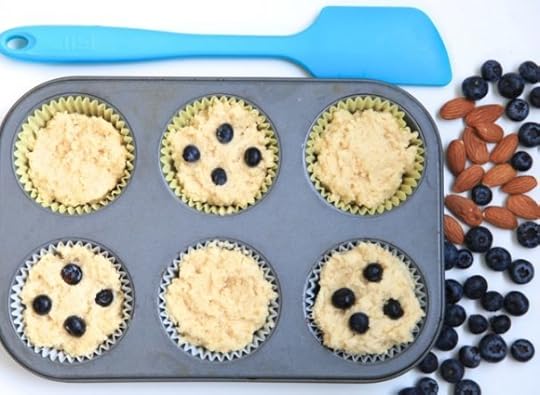
Heat your oven to 375 °F/190 ºC and line a muffin pan with 9 liners, or use a silicone muffin pan.
Whisk together almond flour, baking powder and salt.
In a large bowl, whisk together butter, heavy cream, egg, almond extract, stevia and baking soda until smooth.
Combine the almond flour mixture with the bowl of wet ingredients, stirring gently to combine. The batter will be thick.
Spoon the batter into the muffin tin, filling the cups almost to the top (this recipe makes 9 muffins).
Bake until the muffins are lightly browned on top and a toothpick inserted into a muffin comes out clean, about 16 minutes. Allow muffins cool for 10 minutes in the pan before eating.
For optimal freshness, store these keto muffins in the refrigerator.


The post Keto Blueberry Muffins appeared first on Mark's Daily Apple.



December 29, 2017
From Skinny Fat to Healthy Fab!
It’s Friday, everyone! And that means another Primal Blueprint Real Life Story from a Mark’s Daily Apple reader. If you have your own success story and would like to share it with me and the Mark’s Daily Apple community please contact me here. I’ll continue to publish these each Friday as long as they keep coming in. Thank you for reading!
 In the past, even though on the outside I was British size 8 (American size 0) on the inside I was skinny fat with numerous health problems. I was sick of feeling sick all the time. Constant migraines, bloating, cold after cold, yeast infections, low energy levels and lack of concentration. were all I knew at that time. In fact, I was most probably on my way to become another victim of modern diet type 2 diabetes. Finding the Primal/paleo/keto way of living allowed me to reverse all my health problems.
In the past, even though on the outside I was British size 8 (American size 0) on the inside I was skinny fat with numerous health problems. I was sick of feeling sick all the time. Constant migraines, bloating, cold after cold, yeast infections, low energy levels and lack of concentration. were all I knew at that time. In fact, I was most probably on my way to become another victim of modern diet type 2 diabetes. Finding the Primal/paleo/keto way of living allowed me to reverse all my health problems.
Currently, I live in Shanghai, but my journey began in Poland in a small village next to the Baltic Sea. I was fortunate enough to be raised in a pollution free environment and on organic produce from my Granny’s farm. Sadly, my Granny stopped raising animals and growing her own vegetables when I was 15, and that’s when my family and I discovered processed food, coated in vegetable oils and sugar.
My favourite food to eat became chocolate, and because I’ve never struggled with weight I felt invincible and thought it was O.K. to eat it in unlimited quantities daily. I was also a carb addict, eating so called ‘healthy’ foods. My breakfast consisted of cappuccino and croissant, followed by freshly squeezed orange juice. For lunch, I would often opt for a sandwich (made out of ‘healthy’ whole grains, of course!), a pack of crisps and a chocolate bar. For dinner, I would have homemade pasta or a rice dish cooked in vegetable oils. I would often end my day with a dessert or a piece of fruit and a glass or two of wine. This high carb and sugar diet left me hungry, so grazing throughout the day on chocolate and fruits to sustain my energy level was also a daily occurrence.
Being too preoccupied with studying, working, partying, drinking, toxic relationships, traveling and staying up late throughout all of my teens and twenties, I failed to consider what was going on inside my body, my spirit, and my soul. Finally, in my late 20’s, I hit rock bottom with all sorts of health issues. This desperate “aha” moment brought me to the Primal Lifestyle. I finally realised that my dress size had nothing to do with health and simply being skinny didn’t equate to being healthy.
During this time my father was also diagnosed with malignant gastric cancer, which left me devastated and confused about the lifestyle my family and I were leading. I took this moment as a very loud wake-up call and decided to embark on a journey that would heal my broken relationship not only with food but also my soul.
For the past three years I have been studying, researching and experimenting with the healing properties of different foods, essential oils, and relaxation techniques. Thanks to my newfound application to a healthy lifestyle, I managed to overcome my health challenges. During my healing journey I had to restore my insulin sensitivity, treat my leaky gut, and cure my insomnia. Staying away from my best ‘friend’ chocolate and other man-made carbohydrates, such as bread, pasta, chips, cookies, and cutting out refined sugar including ‘natural’ sugar like honey wasn’t easy, but these were the first steps I needed to take.
Luckily, I just happen to love food and was eager to bring everything I learnt about nutrition into the kitchen and create new meal plans without sacrificing the flavour. The food I make nowadays is gluten-free, vegetable oil-free and sugar-free, and it tastes scrumptious. When choosing ingredients for my meals I focus on locally grown, organic vegetables and grass-fed meat. I love to cook using coconut oil, real butter, ghee and plenty of anti-inflammatory herbs and spices. Through the healing properties of food and daily yoga practice I overcame my health problems. This new lifestyle changed the way I look at food, stress, relationships and exercise.
Of course, these changes didn’t come easily, and I met a lot of resistance—surprisingly mostly from people who I thought, at that time, cared for me the most. This new lifestyle among other things brought changes to my social life, some of which were too big for some of my ‘friends’ to handle or understand. Instead of happily going out for late nights drinking, all I wanted to do was to be active during the day and go to bed at 9 p.m. with my favourite book.
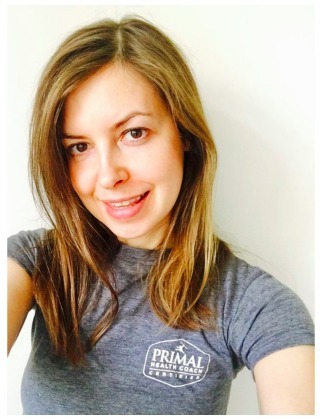 My true friends were happy to meet up, go hiking or play other sports and then make a paleo dinner together, something I really appreciate to this day. Now I understand that having a lot in common in every relationship is key, as without it love or friendship will naturally fizzle out.
My true friends were happy to meet up, go hiking or play other sports and then make a paleo dinner together, something I really appreciate to this day. Now I understand that having a lot in common in every relationship is key, as without it love or friendship will naturally fizzle out.
“Don’t die with the music still inside you,” is one of my favourite quotes by Wayne Dyer. This journey made me rediscover parts of me that I thought were lost forever and gave me the courage to embrace the music within and get to know the person I truly am.
Now as a Primal Health Coach, my mission is to empower women to become the best versions of themselves by offering guidance through the journey to physical, emotional, and spiritual well-being. The Primal way of life has nourished my body in all the right ways and made the best quality of life possible.
Izabela Misiuk, Primal Health Coach, ThriveInShanghai.com

The post From Skinny Fat to Healthy Fab! appeared first on Mark's Daily Apple.



December 28, 2017
What Collagen Does For Performance
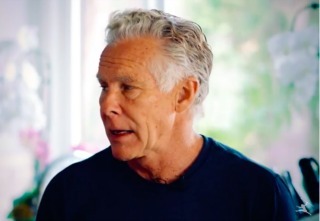 I’ve always been a student of performance—in my athletic days and now. Whether it’s nutritional intake, training strategies, or supplement choices, this is where science comes to life for me. Over the years I made this interest work for my fitness performance and now for my optimal health. It’s not about “hacking” the body’s functioning but understanding it from the ground floor up. This knowledge helps me live and age through life more on my own terms, which is exactly the way I like it.
I’ve always been a student of performance—in my athletic days and now. Whether it’s nutritional intake, training strategies, or supplement choices, this is where science comes to life for me. Over the years I made this interest work for my fitness performance and now for my optimal health. It’s not about “hacking” the body’s functioning but understanding it from the ground floor up. This knowledge helps me live and age through life more on my own terms, which is exactly the way I like it.
Every bit of research, every connection, every choice has done its part to fill in the picture for me—the daily practices and overall philosophy behind the Primal Blueprint.
In the last few years, collagen has been one of the tools that has made the biggest difference in my life. It was instrumental to recovering from an injury that (I was told) would put me on the sidelines indefinitely, and now it supports continuing joint health and mobility as I push myself physically long after many people give up on their bodies period.
Recently, Brad Kearns and I recorded a conversation about my interest in collagen—how I started applying it to my health, what it offers for fitness performance, and how anyone—athlete or not—can benefit. Take a look.
Thanks for stopping by today, everyone. Have questions, comments? Share them below, and have a great end to the holiday week.
The post What Collagen Does For Performance appeared first on Mark's Daily Apple.



December 27, 2017
10 Alternative Therapies for ADD & ADHD
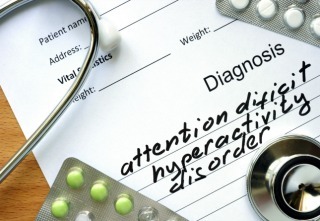 A few months back, I put together an article on alternative therapies for depression. Many readers showed a lot of interest in some of the emerging non-drug treatments in that field, and, more importantly, many began to relay their own stories about how they overcame or successfully managed their depression through various strategies. That’s what I love the most about this community—sharing experience and expertise in the interest of broadening available solutions beyond what conventional thought tells us.
A few months back, I put together an article on alternative therapies for depression. Many readers showed a lot of interest in some of the emerging non-drug treatments in that field, and, more importantly, many began to relay their own stories about how they overcame or successfully managed their depression through various strategies. That’s what I love the most about this community—sharing experience and expertise in the interest of broadening available solutions beyond what conventional thought tells us.
I’ve received frequent requests over the years to do the same for the convoluted world of ADD and ADHD treatment. There’s a lot to this picture and (if there’s interest) probably fodder for a follow-up post. For today I’ll delve into some of the lifestyle strategies and alternative therapies that offer the most promise.
I understand that ADD and ADHD treatment—and even diagnoses—are sensitive topics. Debates continue to rage within the medical, caregiver, and even Primal communities as to what actually constitutes the conditions, whether they’re simply modern constructs, and what the best forms of treatment are. Despite the increasing numbers of diagnoses, there’s still a lot we don’t know about the issue and even less people can agree on.
In the U.S., it’s estimated that between 3 and 10% of children and 1-6% of adults have been diagnosed with attention deficit hyperactivity disorder (ADHD). As the stats imply, both ADD and ADHD are more prevalent in children but there’s a very strong possibility that the symptoms will continue into adulthood.
Under the conventional model of diagnosis, those difficulties typically manifest as “an inability to organize complex sequences of behavior, to persist in the face of distracting stimuli, and to respond appropriately to the consequences of past behavior.” Resulting academic impairments, social dysfunction and poor self-esteem can in more serious cases morph into alcohol and substance abuse, criminal tendencies, and antisocial behaviors as a person slides into adulthood (although other family, social and educational factors come into play here).
The difference between ADD and ADHD, in case you’re wondering, is the additional symptom of hyperactivity in the latter condition. In much of the literature, the focus is now almost exclusively geared towards ADHD as the more inclusive of the two disorders, and that’s what I’ll largely be focusing on too.
Clearly, through the black and white lenses of the conventional practitioner, there’s a lot to be said for prescribing a heady dose of Ritalin at the first signs of inattentiveness or hyperactivity. Doing so has been shown to improve ADHD symptoms in around 60% of patients. But there’s often no corresponding improvement in school performance, and the rather alarming fact that 40% of those taking side effect-laden stimulants like Ritalin still aren’t seeing any measurable improvement in their symptoms. What’s more, a daily dose of Ritalin, for example, acts in a similar way to cocaine in the brain, while other common ADHD drugs have in some studies been associated with earlier onset of bipolar disorder and growth suppression.
In the U.S. and elsewhere, Ritalin and associated stimulant prescriptions are rapidly on the rise, but even in conventional circles many are beginning to question whether the symptoms that comprise the “disorder” might simply be an innate response to living conditions or even foods that we’re not well adapted to. Are we then prescribing potentially harmful drugs to our kids (and ourselves) when all we should be doing is eating better, revising our educational system, and making key lifestyle changes?
The Possible Ancestral Function of ADD & ADHD
In 2008, a Northwestern University study suggested that ADHD may be an evolutionary adaptation suited to the hunter gather lifestyle that’s comprised most of humanity’s history. Researchers compared two tribal groups in Kenya—one which was still nomadic, and one who had settled into villages. Within both tribes, researchers located individuals exhibiting ADHD traits, finding that those within the nomadic tribe were better suited to the hunter-gatherer lifestyle and in fact were thriving compared to their non-ADHD peers.
Those ADHD individuals in the settled tribe showed the inevitable difficulty in the classroom and in the more structured drudgery of everyday life in a village—a common element linking today’s ADHD children.
The results suggest that rather than ADHD being a “disorder,” it may be an adaptation giving the individual an advantage in certain types of learning and activities—namely those centered around nomadic subsistence. This raises the question of whether we should be approaching ADHD as a disorder in the first place, or as a variation of constitution that thrives on a different way of life—one which doesn’t force children to learn by sitting in hard chairs listening to the drone of a teacher’s voice (or even where adults are expected to sit still for 8 hours a day and stare at an artificially lit screen).
That’s a topic for discussion (and maybe further research), but it’s interesting food for thought in the meantime.
10 Alternative Therapies and Lifestyle Strategies for ADD & ADHD
Faced with the dilemma of potential misdiagnosis, conventional drug side effects, and a high rate of conventional treatment failure, I’m going to venture that it’s logical to seek out alternative ADHD therapies and basic lifestyle strategies that can either complement or, in some cases, replace those prescribed by the doctor. Let’s look at a few of the more popular or emerging recommendations.
Avoid Food Colorings
This is arguably where the notion of dietary influence on ADD/ADHD first emerged. Back in the 70s, San Francisco-based allergist Ben Feingold developed an elimination diet that had thousands of parents claiming their children with ADHD showed marked improvement in their symptoms. The foundation of that diet? Elimination of food colorings and preservatives.
There was plenty of industry pushback at the time, but in recent years there’s been a resurgence of interest in artificial food colorings and other synthetic compounds in foods and the impact they might be have on ADD and ADHD symptoms. In 2004, a study published in the Journal of Developmental & Behavioral Pediatrics revealed that artificial food colors had significant negative effects on focus and concentration, therein promoting hyperactive behaviors in children and teens.
A spate of research linking artificial food colors and ADHD followed suit, culminating in a 2007 study in which researchers unequivocally placed hyperactive behavior firmly on the doorstep of four synthetic colors and a sodium benzoate preservative…regardless of whether the children eating or drinking them had actually been diagnosed with ADHD.
While it’s hard to control everything kids eat, cutting food coloring and additives is a good first-line strategy—for anyone with ADD/ADHD or not.
Ditch Junk Food
Stimulants like Ritalin work by temporarily restoring reward signaling in the brain. Children and adults with ADHD tend to exhibit haywire patterns in certain neurotransmitters, particularly in the case of dopamine—which just so happens to influence a person’s ability to make rational choices or delay gratification.
Reward signaling in the brain of someone with ADHD is often very similar to people prone to binge eating. Let’s be honest and admit that a diet rich in junk food is partly to blame for certain behaviors inherent in ADHD patients. The continual flood of dietary sugar, along with heady combinations of refined sodium and hydrogenated fats, is enough to invoke chaos in anyone’s reward system and general health. (This could be a post in an of itself.) Ditch the junk food, feed the body the micronutrients it requires, and at least some of the ADHD symptoms will improve.
Eliminate Other Potential Food Allergens
Seeing as we’ve got the elimination ball rolling, why not single out a few more likely culprits? In functional medicine circles, elimination diets have been used decades to manage symptoms of ADHD and other forms of neural dysfunction. In particular, these diets have focused on eliminating both gluten and casein to good effect.
A 2011 study published in The Lancet placed 50 ADHD children on a hypoallergenic diet of rice, turkey, lamb, lettuce, carrots, pears, and other pre-approved whole foods known for the non-allergic palatability. Close to two-thirds of the children experienced a significant improvement in their symptoms on the diet, with most of them regressing to former symptoms shortly after stopping the diet.
A 2013 Danish study involving 72 children with autism spectrum disorder, which can include many symptoms similar to those of ADHD, found that introducing a diet free from both gluten and casein produced significant results. Certainly, research linking celiac disease to ADHD-like symptoms goes a long way towards verifying this hunch.
Up Essential Fatty Acids
As the concept of nutritional ADHD therapy has taken hold, there’s been a particular focus on omega-3 essential fatty acid deficiency. As most Primal folks know, omega-3s play a critical role in the structure and function of membranes enclosing brain cells, and are similarly important for regulating transmission of impulses between nerve cells.
If a developing brain isn’t receiving enough omega-3 fatty acids through dietary or supplementary sources, the likelihood of developing ADHD and other behavioral issues increases. In particular, a lack of the long-chain fatty acid DHA has repeatedly been linked to a higher risk of ADHD.
But it might not be as simple as eating a more omega 3-rich diet. Studies examining dietary patterns and blood fatty acid composition in children note that kids with ADHD seem to have lower serum fatty acid content, regardless of how many omega-3s they get in their diet. It’s thought that this might be due to increased fatty acid oxidation in these children, suggesting a significant increase in omega-3 fatty acid consumption is needed to offset the jumped-up fatty acid metabolism.
The consensus? While the jury is still officially out on omega-3s and ADHD, high quality omega-3 supplementation from the likes of fermented cod liver oil is probably a good idea for most people with ADHD. Several studies recommend in the range of 300-600 mg/day of supplemental omega-3, but I wouldn’t be afraid to go over 1000 mg in those who really need that boost (just run it by your doctor first).
Increase B-Vitamin Intake
Supplementing with certain vitamins to fill dietary gaps may be a good strategy for some ADHD patients as they play a critical cofactor role in facilitating energy metabolism and neurotransmitter synthesis. B-vitamins are at the top of the chart in this respect, playing a key role in carbohydrate metabolism along with supporting healthy myelin sheath maintenance.
Vitamin B6 in particular can help to boost low levels of serotonin in hyperactive kids and alleviate aggression, especially when combined with magnesium. And of course, more vitamin D, whether from the sun or supplementary sources, is also likely to improve ADHD symptoms in those who are lacking.
Experiment With Trace Minerals
As investigations continue into the links between diet and behavioral issues in both children and adults, it’s becoming increasingly apparent that ADHD patients are often deficient in zinc, iron and magnesium.
In children with ADHD, low serum zinc levels are associated with decreased concentrations of circulating fatty acids, which can lead to a negative feedback loop. To illustrate this point, researchers showed that supplementing with evening primrose oil, which is rich in gamma-linolenic acid, improved the behavior of ADHD kids in school, but that this positive effect was only apparent in those who were deficient in zinc.
Iron, as it happens, also plays a pivotal role in dopamine neurotransmission. In a 2004 study, 84% of children with ADHD tested were deficient in blood ferritin, compared to just 18% in health controls. Perhaps unsurprisingly, low serum ferritin levels were associated with more severe ADHD symptoms across the board. But supplementing with iron can be a fickle beast, and one which should be accompanied by regular blood measures with physician supervision.
Then there’s magnesium. I’ve already linked to a study that showed decent improvements from a combined approach of vitamin B6 and magnesium, and magnesium supplementation alone may provide almost as much efficacy in taking the H out of ADHD.
Consider Choline
Choline is an essential micronutrient which plays an important role in brain development, liver function, muscular maintenance, nerve function, and plenty more besides. Suffice it to say that a deficiency in choline is not a good thing. In this study, 1H-MRS analysis indicated that children with poor memory had lower concentrations of choline-containing compounds, suggesting that increasing choline consumption may at least target the memory symptoms associated with ADHD.
The average Primal diet should already provide a decent dose of choline, but if in doubt don’t be afraid to offer a few more pastured eggs, and maybe throw in a serving of grass-fed liverwurst while you’re at it.
Invest In Acetyl-L-Carnitine
Acetyl-L-carnitine (ALC) facilitates the transport of fatty acids into the mitochondria, thereby boosting energy production via efficient metabolism of fatty acids. In a 2002 study, 13 out of 24 boys with ADHD showed a significant improvement in attention problems and aggressive behavior at both home and school.
More recent research into the effect of ALC on ADD/ADHD has been mixed, with several studies concluding no significant positive effect, while another trial that examined the effect of ALC on 56 fragile X syndrome boys with ADHD found that there were notable improvements in social behavior and significant reductions in hyperactivity from ALC treatment.
Fill In Micronutrient Gaps
Another approach might simply be to invest in a high quality multivitamin (and fish oil) that ticks off all the likely bases in one fell swoop.
Certain clinical micronutrient formulations have often shown impressive results in small trials, with this study, for example, finding a 30% decrease in ADHD symptoms after 8 weeks of micronutrient supplementation in 70% of participants and a marked overall improvement in almost 80% of the participants. A follow-up from the same team with a larger number of subjects found similarly promising results. And these findings are nothing out of the ordinary, suggesting that micronutrients may be a good starting point for both children and adults who are in the process of exploring “alternative” means of treating their ADHD.
Exercise, Exercise, Exercise
Exercise is one are where there’s no shortage of research—the challenge is sorting out the facts from the almost-fiction. A 2013 study showed that a single bout of moderate-intensity aerobic exercise improved reading accuracy and processing in both children with and without ADHD compared to those who didn’t exercise. The researchers concluded that “single bouts of moderately intense aerobic exercise may have positive implications for aspects of neurocognitive function and inhibitory control in children with ADHD.” Another trial found that attention deficit symptoms in ADHD children could be minimized through physical activity whether they were taking Ritalin or not.
Yoga, which straddles both the exercise and meditation realms, has been a bit of a mixed bag in the ADHD research arena. While some studies have found no measurable effects on ADHD at all, others have found yoga to provide a good complementary treatment for children with ADHD.
I venture the power of both exercise and meditation have a lot to offer kids and adults with ADHD. It would be great to see larger studies delving into the subject, but I don’t think it’s worth waiting on when both activities are known to enhance well-being anyway.
Other Alternative Therapies to Consider
Given more time today (or another post), we could explore the possibilities contained within other burgeoning alternative ADD and ADHD treatments, like neurofeedback strategies, acupuncture, vestibular stimulation…even massage. There’s a lot going on in the world of alternative therapies, and many of the findings are very promising indeed.
Final Thoughts…
I’d love to see more forays like this one into the world of comprehensive treatments—what finely tuned combinations of nutrition, lifestyle, supplements and, in appropriate situations, medications provide the most benefit for those suffering from ADD or ADHD (or at least the symptoms we’ve come to associate with these disorders).
And, as is so often the case, I think we’re called to examine the environment and expectations of modern living. Where can we simplify, naturalize our lives and the lives of our children? What’s possible, for the sake of our kids’ well-being, to change in our home life or educational choices? Sometimes big issues call for big questions—questions, not to mention answers, for which conventional wisdom isn’t likely to take the lead.
Thanks for reading everyone. I’m interested in your thoughts and questions—and certainly your experiences. What opinions and recommendations would you add?
Want to make fat loss easier?
Try the Definitive Guide for Troubleshooting Weight Loss for free here.
The post 10 Alternative Therapies for ADD & ADHD appeared first on Mark's Daily Apple.



December 26, 2017
Nothing Like a Primal Kitchen Restaurant Party to Close Out 2017!
 It’s hard to believe a year ago Primal Kitchen Restaurants was still a vision in the making. This year has truly been our inaugural year with the opening of our first two locations in South Bend, Indiana, which launched in July 2017, and Culver City, California, which opened its doors in September. And we were thrilled to end this amazing year on such a high note—genuinely a weekend for the books in Culver City. December 8-9, Primal Kitchen Culver City hosted their official grand opening party to celebrate our first restaurant opening on the West Coast.
It’s hard to believe a year ago Primal Kitchen Restaurants was still a vision in the making. This year has truly been our inaugural year with the opening of our first two locations in South Bend, Indiana, which launched in July 2017, and Culver City, California, which opened its doors in September. And we were thrilled to end this amazing year on such a high note—genuinely a weekend for the books in Culver City. December 8-9, Primal Kitchen Culver City hosted their official grand opening party to celebrate our first restaurant opening on the West Coast.
The weekend was filled with raffles, games, prizes, menu samples, wine tastings by FitVine Wine, and even a book signing with our co-founder and the godfather of paleo, Mark himself. Our friends from Paleo Treats and Icelandic Glacial also got in on the fun by setting up booths filled with free samples and free swag on our outdoor patio.

Mark as well as Devyn and Kyle Sisson, the Culver City franchise owners, and their staff had an amazing time meeting and talking with everyone who came out for the celebrations. It was an afternoon of good food, good vibes, and great people! In Mark’s words, “It was heartwarming to hear the thanks from people who have been searching for a restaurant like ours for years.”
We can’t tell you how much we appreciate all the love and support that we’ve received from our loyal followers, and we can’t wait to spread the #cleaneatingmovement across America!

A Look Towards 2018!
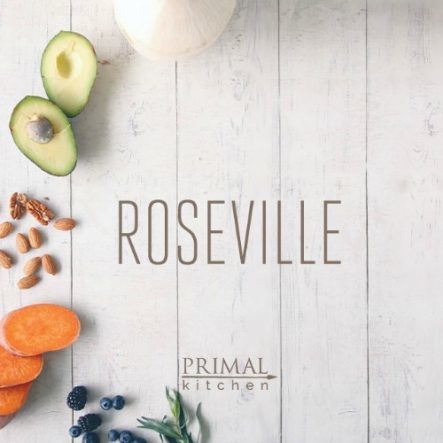 Primal Kitchen Restaurants has some big things in the works for 2018! We have just announced that we will be opening a new restaurant in Roseville, CA! Just 20 miles away from downtown Sacramento, we are aiming to have this location opened by March! We are also making great progress with our location in Santa Cruz, CA, which we are hoping to open by April!
Primal Kitchen Restaurants has some big things in the works for 2018! We have just announced that we will be opening a new restaurant in Roseville, CA! Just 20 miles away from downtown Sacramento, we are aiming to have this location opened by March! We are also making great progress with our location in Santa Cruz, CA, which we are hoping to open by April!
With those two locations in the works, we’re actively looking for new cities to expand in! Are you interested in bringing Primal Kitchen Restaurants to your city? Check out our franchising opportunities, and join our family today.
From all of us at Primal Kitchen Restaurants, we want to wish you the happiest holiday season yet! And we’d love to hear your Primal Kitchen Restaurant wish list for 2018. What cities would you love to see us in?
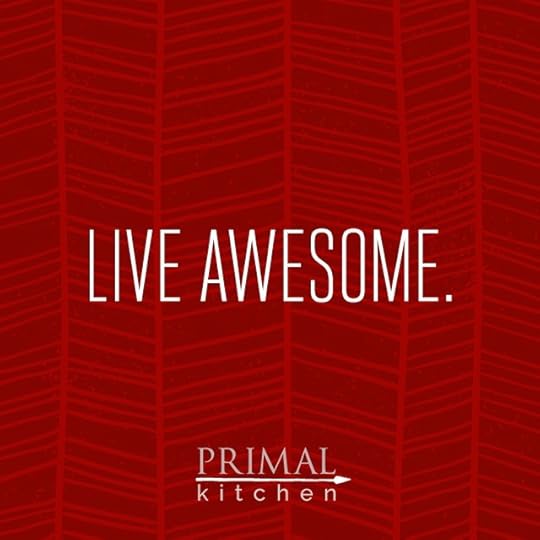
The post Nothing Like a Primal Kitchen Restaurant Party to Close Out 2017! appeared first on Mark's Daily Apple.



December 25, 2017
Happy Holidays
The staff and I are taking the day off to be with family and friends, but I wanted to wish each and every one of you the very best today. This community has been so important to me and to my family. It’s been the center of my passion and profession for over eleven years now, and it’s a privilege every day to see people change their lives through the message and support here. To you and yours this season, thank you—and Happy Holidays, everyone.
The post Happy Holidays appeared first on Mark's Daily Apple.



Mark Sisson's Blog
- Mark Sisson's profile
- 199 followers





